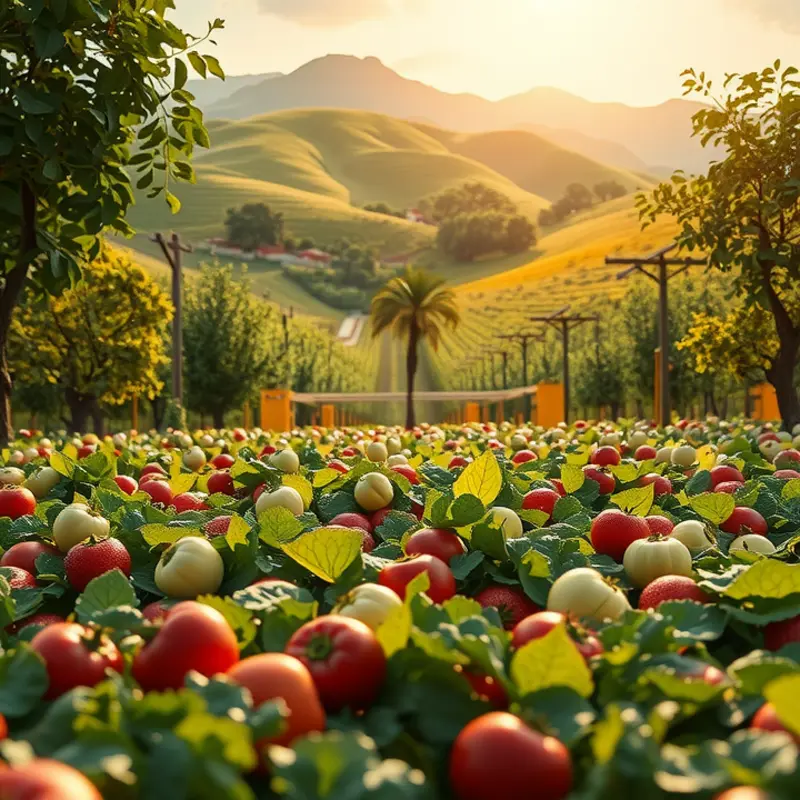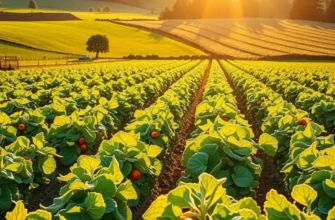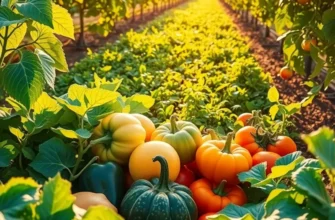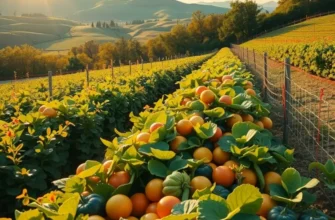The connection between what we eat and the health of our planet has never been clearer. As biodiversity faces unprecedented challenges, our food choices can either contribute to ecological decline or support restoration efforts. By embracing certain foods, we can play an active role in promoting a healthier ecosystem, encouraging a diverse array of plants and animals to thrive. This guide is tailored for environmentally-conscious individuals who wish to align their lifestyle with sustainable practices, making informed decisions at their meal tables.
Diverse Crops for a Diverse World

When choosing ingredients for our meals, the diversity of the crops we select plays a significant role in fostering biodiversity. Selecting heirloom varieties, ancient grains, and native plants not only enhances our culinary experiences but also revitalizes and stabilizes ecosystems.
Each crop has a unique role in its natural environment. Heirloom varieties, for instance, have been passed down through generations and are known for their genetic diversity. This diversity is crucial because it enhances the resilience of crop plants to pests, diseases, and changing climatic conditions. By supporting heirloom crops, we contribute to maintaining a rich genetic pool, which is essential for food security.
Ancient grains like quinoa, millet, and amaranth are re-emerging as staples in sustainable agriculture. These grains often grow in harsh environments, thus reducing the need for intensive agricultural interventions. For example, quinoa, originally from the Andes, thrives in poor soil conditions and requires little water. Incorporating these grains into our diets can reduce the pressure on highly irrigated and fertilized crops, thus preserving water resources and soil health.
Native plants play an equally important role. They are well-adapted to local climates and soil conditions, requiring minimal input while supporting local wildlife. For instance, American pawpaw trees are low-maintenance and offer fruits that act as a staple for many ecosystems. By planting and consuming native plants, we support not just the plants themselves but a whole community of insects, birds, and other wildlife that depend on them.
So, how can individuals contribute to this cycle of biodiversity through their diets? Start small by introducing heirloom and ancient grains into your weekly meal plans. Visit local farmers’ markets, where you’re more likely to find these diverse options. Gardens can be transformative too; growing a few native crops in your backyard or community garden can create a mini-habitat for local wildlife.
Additionally, consider swapping common grains for ancient varieties in your recipes. For instance, use quinoa instead of rice or explore millet in place of oats for breakfast. These small changes can diversify your meals and contribute positively to the planet’s biodiversity.
For those seeking practical advice on minimizing waste and efficiently storing these diverse ingredients, explore tips on safer storage and waste reduction here. By aligning our food choices with eco-friendly practices, we participate in nature’s balance restoration.
Incorporating diverse crops into our diets is a mindful decision with far-reaching ecological benefits. As we savor the flavors of heirloom vegetables and ancient grains, we’re not only preserving food traditions but also supporting a more resilient and biodiverse planet for future generations.
The Power of Plant-Based Eating

Adopting a plant-based diet can significantly bolster biodiversity while reducing our ecological footprint. By prioritizing legumes, nuts, seeds, and vegetables, we support sustainable agriculture and nutrition simultaneously. These foods are often less resource-intensive to produce than animal products, making them a cornerstone for eco-friendly diets.
Sustainability Benefits of Plant-Based Foods
Legumes, such as lentils and beans, enrich soils through nitrogen fixation, enhancing soil fertility naturally. They provide a plant-based protein source requiring less water and emitting fewer greenhouse gases than traditional livestock farming. Similarly, nuts and seeds add biodiversity to agricultural systems. They offer essential fats and proteins while thriving in diverse climates, supporting varied ecosystems.
Vegetables are also champions of sustainability. Leafy greens, root vegetables, and cruciferous plants improve soil health and sustain pollinator populations. By choosing diverse vegetable crops, we encourage varietal growth, which protects against pests without harsh chemicals.
Incorporating Biodiversity-Rich Foods into Daily Meals
Transitioning to a plant-based diet can be seamless with a few culinary strategies. Aim to base your meals on a variety of legumes, grains, veggies, and nuts. Try incorporating a chickpea salad or a nut-based curry for nutrient-rich, eco-friendly dining.
Batch cooking using versatile plant-based staples saves time and reduces waste. Practical Ingredient Batching can be an excellent strategy to optimize kitchen time and resources while ensuring diverse nutritional intake.
Sustainable Farming Practices and Initiatives
Sustainable farming initiatives around the world aim to increase agricultural biodiversity. Practices such as polyculture and agroforestry incorporate different plant species to restore natural habitats and promote ecosystem resilience. These methods increase yield stability, helping farms resist climate disruption and disease.
Local communities and organizations are integrating traditional knowledge with modern techniques to nurture biodiversity. Supporting farms that adopt ethical and ecological farming practices reinforces these positive shifts. By making conscious food choices, individuals can influence farmers’ decisions toward more sustainable methods.
Plant-based eating does not only contribute to human health but fortifies our planet’s ecological framework. Each meal rich in biodiversity and sustainability becomes a step towards ecological balance.
Final words
Making conscious food choices is a powerful way to support and restore biodiversity on our planet. By incorporating diverse crops and adopting a plant-based diet, we can contribute to a healthier ecosystem and foster the growth of a wide range of plant and animal species. As each meal serves as an opportunity to connect with nature, consider how your choices can create a ripple effect of positive change. Let’s embrace the journey of cultivating awareness and commitment to biodiversity through our eating habits, forging a sustainable future for generations to come.








